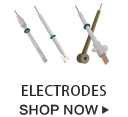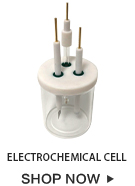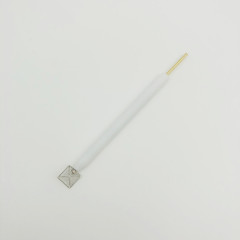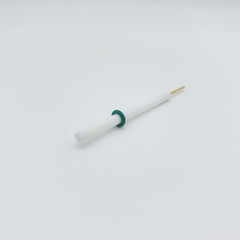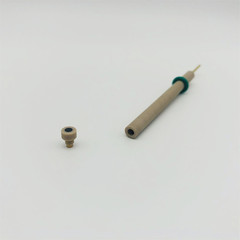Electrode for Electrochemical Cell
An electrode for electrochemical cell is a solid electric conductor that carries electric current into non-metallic solids, or liquids, or gases, or plasmas, or vacuums. Electrodes are typically good electric conductors, but they need not be metals. there are three kinds of the electrodes for electrochemical cell: Working electrodes, Counter electrodes and Reference electrodes.
Working Electrode for Electrochemical Cell
The working electrodes is probably the most important component of an electrochemical cell: the working electrode is where the electrically driven chemical reaction and electron transfer happens.
Platinum, gold, carbon and mercury are the most commonly used materials but being electrochemically inert and easy to be fabricated into many forms, platinum is often preferred. Gold electrodes are less tolerant to oxidation in the positive potential range, but good to form self-assembled monolayer on its surface while carbon electrodes are more tolerant to more negative potentials.
Counter Electrodes for Electrochemical Cell
Counter electrodes, also referred to as auxiliary electrodes, are used in two or three electrode systems to complete the circuit so that electrochemical methods such as cyclic voltammetry can be performed. In a three electrode electrochemical cell they do so without passing significant current through the reference electrode.
Reference Electrodes for Electrochemical Cell
Reference electrodes are electrodes with a stable and well-defined electrochemical potential against which the potential of other electrodes in the system can be controlled and measured. They are used in three electrode systems to perform electrochemical methods such as cyclic voltammetry.

 United States (USD)
United States (USD) United Kingdom (GBP)
United Kingdom (GBP) Canada (CAD)
Canada (CAD) Australia (AUD)
Australia (AUD) Singapore (SGD)
Singapore (SGD) New Zealand (NZD)
New Zealand (NZD) India (INR)
India (INR)
